Taking a look at TK sliders Featuring TK Sliders rear swaybar connectors
|
TK
Sliders
|
David Bandel from the Jeep TJ
mailing list sent me an email last month, detailing a new product
that his friend had come up with. This product, called TK
Sliders, was going into production with a patent pending.
David thought the innovative design was worth telling people about,
so he sent in this excellent article for ORC.
Maximizing RTI scores on the TJ
Wrangler
by David Bandel
INTRODUCTION I, like many other TJ owners, am in a constant quest to improve the off-road capability of my Jeep while keeping the cushy street ride and good handling qualities inherent in the TJ Wrangler’s design. Softer, longer springs, radical new heim and "Johnny Joint" control arms, longer shocks, and large tires all aid in off-road articulation and traction. Since many of us must answer to a "financial advisor" (i.e. significant other), we would like to improve our Wrangler’s capabilities as much as possible without cleaning out the bank account in the process. The first step in building any rig for off-road use is to increase traction, as traction and ground clearance are, undeniably, two of the most important factors in a good off highway vehicle. A good set of large tires with an all-terrain or mud-terrain type of tread is mandatory. The next step is to find ways to keep all four tires on the ground. If they aren’t touching, they can’t pull, with or without locking differentials. So, how do you objectively test different vehicles for their ability to keep all four tires on the ground fairly? The "Ramp Travel Index" (RTI) was developed as a method of objectively testing different vehicles for their ability to keep all four tires on the ground. By using a standard ramp with a 20 degree incline and the formula (1000/W)*D, where W is the wheel base in inches of the vehicle being tested and D is the distance traveled up the ramp by the leading tire. This distance is measured from the wheel hub center to the ramp using a straight edge or square, then you simply measure the distance the tire traveled up the ramp to that point. As an example, say a stock TJ with a wheel base of 93.4 inches travels 70 inches up the ramp. 1000 / 93.4 = 10.70, then (10.70 X 70) = an RTI of 749. Easy! Well, now that we know how a ramp works, how do we go about improving our score on our test TJ? I recently came across a product that can help improve articulation without any adverse handling effects on the street and are also quite affordable. Several weeks ago I received a pair of TK Sliders rear sway bar connectors from Timothy Kyle of Solid Christian 4x4 Equipment Inc. (SC4X4E, Inc.). Now, anyone who has crawled under their Jeep and looked at the rear axle will know that on most rigs, in order to get full articulation from the rear axle, it is necessary to disconnect the rear sway bar completely. On the TJ and Grand Cherokee however, this could be a problem, as the rear sway bar helps limit the down travel of the rear axle. If the rear axle articulates too far, the rear coil spring will literally fall right out, as there is nothing besides the length of your rear shock absorber to hold it in. The spring is kept in place during normal driving by the bump-stop tower and compression on the spring itself. There are no clips holding it in place as on the front coil springs. Tim Kyle wanted to address this problem and came up with a very unique solution. SO WHAT IS THIS NEW THING?
THE TESTS Before we get into the specifics of the test I would like to give you a bit of information about the TJ used. It is a 1997 SE 2.5L, 5 speed, with the Rubicon Express 3" lift kit and adjustable upper control arms and Doetsch Tech shocks. It is running 32x11.5x15 BFG Mud-Terrains on Z aluminum rims with 3.75" backspacing. It also has a 1" body lift from JB Conversions for a bit of added fender clearance. As with any modified vehicle, your results may vary, but most vehicles of this type should see similar, if not better results. If you are running a 4.0L or auto transmission, larger tires, taller lift, longer shocks, etc, you will more than likely see an even greater increase in the differences in RTI scores than what we found due to vehicle weight, tire weight, shock length, and the articulation characteristics of your specific suspension components. The test was conducted with the tires at a street pressure of 26psi first, just to get a good "baseline" measurement on this specific vehicle. I realize everyone reading this is going to have different tire makes, treads, and sizes which will all behave differently when aired down to "trail" pressures. Therefore the only real "constant" in tires between vehicles is when they are at "Rock Hard" street pressure, thus this initial test. Also, different people will run their tires at different pressures off road based on tire size, rim width, terrain, and how comfortable they feel running the risk of losing a bead, so there really is no way to test accurately for all different kinds of tires and drivers. Therefore, the second test was done at my usual trail pressure of 10 psi just to give you an indication of how different tire pressures will effect RTI scores and hopefully in the real world, traction on the trail.
All tests where performed with the front sway bar disconnected and simply bungeed out of the way. The first test was then done forward up the ramp, tires at 26psi, which netted a distance up the ramp of 83". Please note that my TJ- with aftermarket control arms and lift kit- has a wheelbase of 92.25", slightly less than the factory specified wheelbase of 93.4". This netted an RTI score of 900. (1000/92.25 x 83). Not too shabby, but we can do better. The baseline test yielded a score of 900 forward, and the TJ ramped an 857 backward.We then disconnected the TK Sliders and ran the TJ back up the ramp, still at the street pressure of 26psi in all tires. TK Sliders unpinned, tires still at 26psi...resulting in scores of 1062 and 912!Now we see the difference in performance due to the TK Sliders being in the "disconnected" mode. The TJ now goes an impressive 98" up the ramp, giving us a score of RTI 1062 (remember, 1000 is considered a "perfect" score, when the vehicle can go up the ramp equal to the length of it’s own wheel base). We went from a score of 899 to 1062 with the pull of two little pins, an extra 15 inches up the ramp! Going up the ramp in reverse also saw a respectable gain of 5", increasing the original score from 857 to a very respectable RTI of 912. Another unexpected bonus of the TK Sliders was that it allowed the body of the Jeep to maintain a much more level stance, as can be seen in the picture above (on the right). Note how the added articulation at the rear axle allows the body to "adjust" itself better between the front and rear axle articulation. In other words, anyone who has seen a TJ on the trail knows that 90% of the articulation occurs at the front axle, forcing the body to pretty much go "along for the ride" on the same plane as the rear axle, whether the rear tires are touching the ground or not. This can result in some pretty scary angles while riding inside. With the TK Sliders "disconnected", the added articulation of the rear axle alleviated this problem somewhat, which should result in a much more level ride off-road. Since the rear axle is not solidly connected to the frame and body by the rear sway bar with the TK Sliders unlocked, the right front tire in this shot does not "stuff" as far into the wheel well as when the TK Sliders where in the "locked" condition.
CONCLUSIONS
SC4X4E, Inc.
|




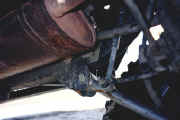
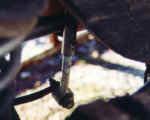

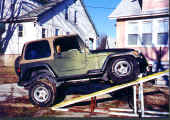
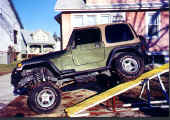
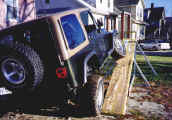
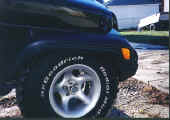
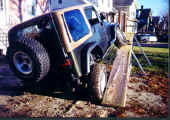

 Your Privacy Choices
Your Privacy Choices